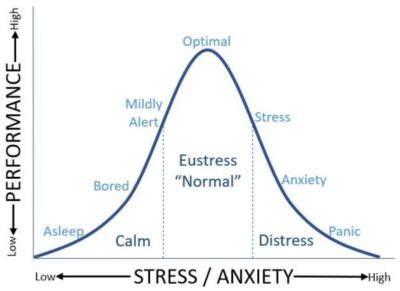Understanding Cognitive Distortions

Cognitive distortions are unhealthy internal thoughts that distort reality. The problem? These internal thoughts negatively impact our emotions and behaviors.
Below is a list of the most common unhealthy thoughts.
1. All or Nothing Thinking
- Definition: Thinking in extremes. Also known as black or white thinking.
- Examples: Either I do it perfectly, or I have failed.
- Quick Guide: find the grey area.
2. Overgeneralizing
- Definition: Taking a single event and creating an entire pattern based off it. Typically involves works such as “nothing”, “never”, “always”, or “everything”
- Examples: Nothing good ever happens. Everything always goes wrong
- Quick Guide: Catch yourself using these words and eliminate them from your vocabulary.
3. Mental Filter
- Definition: Only paying attention to the negative aspects of a situation.
- Example: I spilled my coffee this morning so now my entire day is ruined.
- Quick Guide: recognize the good and bad aspects. When you notice a negative aspect, challenge yourself to also think of a positive aspect to balance.
4. Disqualifying the Positive
- Definition: Rejecting good events that have happened to you and attributing it to another reason
- Example: I only did well at that task because of luck (not hard work or intelligence)
- Quick Guide: Recognize when you truly contribute to good events that occur in your life
5. Mind Reading
- Definition: Jumping to conclusions by making an assumption that you know what someone else is thinking.
- Example: That stranger frowned at me so he must hate me. My coworker didn’t say hi when she passed me so she must be mad at me. My partner didn’t call me so he must purposefully be ignoring me.
- Quick Guide: Recognize that you are not a psychic. There can be many interpretations for why events occur. When you notice yourself mind reading, take a step back and notice all the other reasons. For example, a coworker not saying hi could potentially mean she is mad at me, but it could also be because she is having a rough day or didn’t see me.
6. Fortune Telling
- Definition: Jumping to conclusions by making a negative prediction about the future.
- Example: I will forget everything during my upcoming presentation.
- Quick Guide: Recognize that it is impossible to predict the future. We are setting ourselves up to fail when we make a prediction that we will fail. Create a balance interpretation of all the potential future predictions
7. Catastrophizing
- Definition: Blowing things out of proportion
- Example: If my significant other breaks up with me, my life will be over. My headache must mean I have a brain tumor. My partner hasn’t called me after work so they must be dead in a ditch.
- Quick Guide: Examine the likelihood of that catastrophized thought.
8. Minimization
- Definition: Inappropriately shrinking something in an effort to make it seem less important.
- Example: It’s not a big deal that I am in $80,000 debt and filing bankruptcy.
- Quick Guide: Recognize when you are avoiding something or minimizing its importance. This is oftentimes a tactic used to reduce anxiety.
9. Emotional Reasoning
- Definition: Because you feel a certain way, you assume that it must be true.
- Example: I feel afraid so I must be in danger. I feel embarrassed so I must be stupid.
- Quick Guide: Although it is important to evaluate your emotions, it does not always mean that it is logical. Think through a situation in a logical manner to evaluate the feelings.
10. Shoulds / Must Statements
- Definition: Using words such as SHOULD or MUST when expectations are not achieved, leading to negative feelings
- Examples: I should be in more control of myself. My boss should care about me. I must be the best person always.
- Quick Guide: Recognize when you use words such as “should” or “must” and eliminate them from your vocabulary. Understand that you are trying to place a arbitrary rule on yourself or someone else that does not truly exist in reality.
11. Labeling
- Definition: Assigning labels to yourself or others, causing a rigid viewpoint. Even labels that appear positive can be rigid and lead to negative thoughts.
- Examples: I am stupid. He is a jerk. I am strong.
- Quick Guide: Avoid using labels to describe yourself or others. Instead focus on behaviors. Just because someone did something bad doesn’t mean they need to be labeled as a bad person.
12. Personalization
- Definition: Blaming yourself unnecessarily for something that isn’t completely your fault.
- Examples: She didn’t respond to my text so she must be angry at me. That guy is grumpy so he must hate me.
- Quick Guide: Realize that situations or other people’s behaviors may actually have nothing to do with us. Consider alternative explanations.
Did you notice any cognitive distortions in your own thinking? These are common thinking traps we fall into. As humans, it is going to happen! What is important is to recognize when we have these thoughts and then counteract it.




